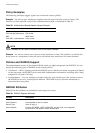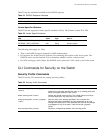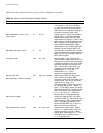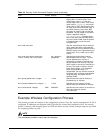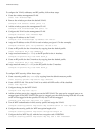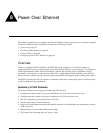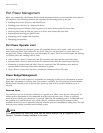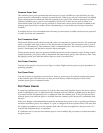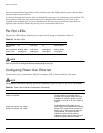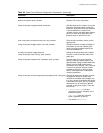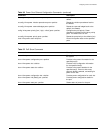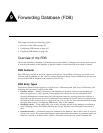
96 Summit 300-48 Switch Software User Guide
Power Over Ethernet
Port Power Management
When you connect PDs, the Summit 300-48 switch automatically discovers and classifies those that are
AF-complaint. The following functions are supported for delivering power to the port:
• Enabling the port for discovery and classification
• Enabling power delivery to a discovered device
• Enforcing port power limits by denying power to a device that exceeds the power limit
• Enforcing class limits by denying power to a device that exceeds the class limit
• Reporting and tracking port power faults
• Managing power budgets and allocation
• Managing port priorities
Port Power Operator Limit
Each port is configured by default to permit AF-compliant devices and to cause a fault for any device
that exceeds the power level defined for the device class. You can also specify a power limit on a
per-port basis. Power is allowed up to maximum limit (20 watts). There are several options for defining
a violation policy and creating a device fault:
• Class violation—Power is removed if the PD consumes more than the discovered class limit.
• Operator limit—Power is removed if the PD consumes more than the operator-specified limit.
• Maximum of operator limit and class—Power is removed if the PD consumes more than the
operator limit or discovered class limit, whichever is greater.
• None—Power is removed if the device exceeds the maximum limit of 20 watts.
Power Budget Management
The Summit 300-48 switch software is responsible for managing overall power consumption to ensure
that it does not attempt to delivery more power than is available. You can configure how the Summit
300-48 switch allocates power to devices upon power-up and in the event that available power is
reduced.
Reserved Power
You can reserve power for devices connected to a specific port. When a new device is discovered, its
defined power requirement is first subtracted from the reserved power pool. If there is sufficient
reserved power on the port, the device is powered. Otherwise the remaining power is subtracted from
the common pool, and the device is powered if there is sufficient reserved plus common power
available. Reserved power is subtracted from the common pool and unavailable to other ports. The total
reserved power cannot exceed the total available power.
NOTE
A connected device may draw more power than the amount reserved, due to configuration error or
oversight. The switch provides notification if this occurs.



